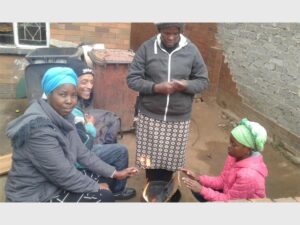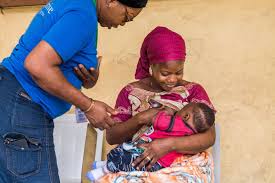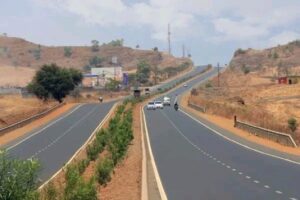It’s almost cyclone season in Southern Africa. The South West Indian Ocean cyclone season starts around November. The 2023-24 season started on 15 November 2023 and ended on 30 April 2025, although in Mauritius and Seychelles it stretched to 15 May 2024.
Most of the tropical and subtropical cyclones form in the basin, which is west of 90°E and south of the Equator.
Recently, two hurricanes caused havoc across the eastern parts of the United States of America. Their names? Helene and Milton. From the names, this could be the married couple next door. Same as Amanda, Priscilla, Otis, Norman or Sandra. This could even be a roll call at a school assembly..
For Southern Africa, think Kundai, Zanele, Yemurai or Gezani. Could be that person you dated in high school. But no, innocuous as the names are, these are names of hurricanes, tropical storms and cyclones.
In the aftermath of the US hurricanes, an account on X asked the question: ‘is there a reason why every hurricane is named after a white person?’
The comments under the post were hilarious, ranging from ‘Hurricane Lebron would be the GOAT’ to ‘You want a hurricane Shaniqua?’.
When hurricanes, cyclones and tropical storms form and make their way out of the oceans, they are given a name.
Naming tradition
Like a new born baby, why are these natural disasters named? And how?
According to the World Meteorological Organisation, naming helps meteorologists and the public keep track of the storms and make note of how far we are into hurricane season. The season’s first storm begins with “A”—for 2024-25, for Southern Africa that will be Ancha and will end with Zanele. But before Zanele, there will be Yemurai.
During World War II, forecasters in the Army and Navy started naming storms while tracking their movements in the Pacific Ocean, according to the National Hurricane Center. In 1953, the U.S. adopted the practice when the US National Oceanic and Atmospheric Administration provided a list of women’s names for Atlantic tropical storms.
More than 25 years later, in 1979, male names were introduced and, today, alternate with female ones. Now, the WMO has a strict procedure when it comes to picking names, including guidelines like character length and easy pronunciation.
“It is important to note that tropical cyclones/hurricanes are named neither after any particular person, nor with any preference in alphabetical sequence,” the WMO explained. “The tropical cyclone/hurricane names selected are those that are familiar to the people in each region.”
The naming procedures can vary, with some regions using alphabetical order and others using the alphabetical order of country names. It is important to note that tropical cyclones are not named after individuals.
When selecting a new name, consideration is given to certain factors:
- Short in character length for ease of use in communication
- Easy to pronounce
- Appropriate significance in different languages
- Uniqueness – same names cannot be used in other regions.
Assigning names to tropical cyclones makes tracking and discussing specific storms more straightforward, especially when multiple storms are active simultaneously. Naming also helps to avoid confusion among meteorologists, media, emergency management agencies and the public. Additionally, naming tropical cyclones can aid historical record-keeping and research on storm behaviour and impacts.
Historically, storms have been named for a long time, but haphazardly and after the fact. For example, an Atlantic storm that ripped the mast off a boat named Antje would become known as Antje’s hurricane. As weather forecasting developed as a science, storms were identified by their latitude-longitude. However, using short, distinctive names – in written and spoken communications – proved quicker and less subject to error. Those were essential considerations when exchanging detailed storm information with hundreds of widely scattered weather stations, coastal bases, and ships at sea.
Using female names for storms started in the middle of the 20th century. Then, in the pursuit of a more organized and efficient system, meteorologists in the North Atlantic decided to identify storms using names from an alphabetical list: the first storm in the year would be given a name that begins with A, like Anne, the second B, like Betty, etc.
Cyclones affecting Zimbabwe
Cyclones only occur occasionally in Zimbabwe. On average, they happen about 2 times a year. The most affected regions are Manicaland, Mashonaland East and Masvingo.
The typical cyclone season depends on the summer monsoon. In the months before (May to June) and after (October to November), the most severe storms occur.
The most severe cyclone to make landfall in Zimbabwe in the past 12 months was ‘Filipo’. It reached a wind speed of up to 94 km/h on March 12, 2024 at 8:00 am local time near Chipinge and was 95 kilometers in diameter at the time. According to the internationally accepted classification, this corresponded to a tropical storm cyclone. On the open sea, speeds of up to 111 km/h were measured.
Before that, two particular cyclones had had a huge impact on Zimbabwe in recent years. These were Freddy and Idai.
Cyclone Idai, ironically named by Zimbabwe, was from March 4 to 16 2019. It was category 3 and affected Manicaland and Mashonaland East provinces.
Cyclone Freddy on the other hand was from Freddy: February 4-24, 2023, then March 2-14, 2023.
For the 2024-25 season Zimbabwe has two names on the list – Chipo and Yemurai. The others on the list are from countries including Botswana, Malawi, South Africa, Comoros and Mozambique.











